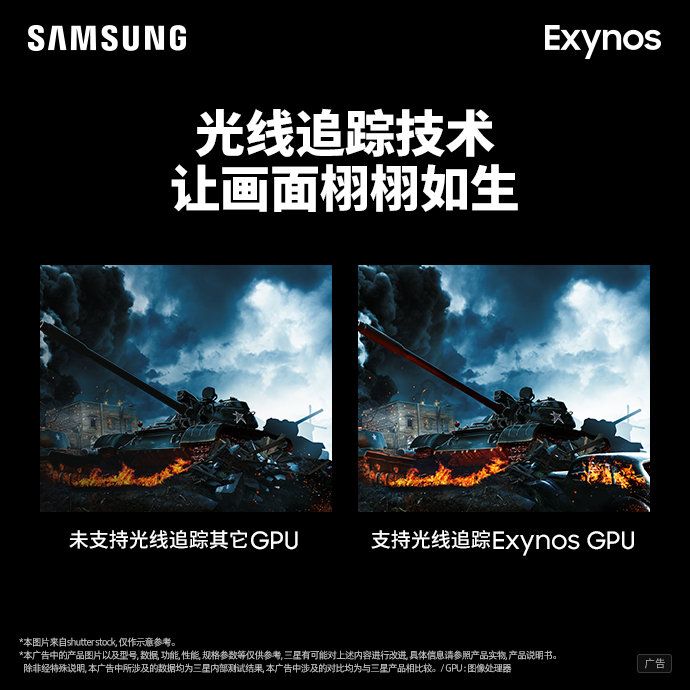The announcement of Samsung partnering with AMD to include Radeon GPUs in Exynos mobile processors was huge. Phones have been getting better and better in terms of graphics, but while ARM Mali and Qualcomm Adreno GPUs are pretty good, they can't hold a candle to Nvidia GeForce and AMD Radeon, two of the biggest names in the GPU space. Radeon GPUs, in particular, are used not only in gaming PCs but also on the PlayStation 5 and Xbox Series S/X. The arrival of Radeon for smartphones will be spearheaded by Samsung, and now we know about one key gaming feature to expect: ray tracing.
Hardware-accelerated ray tracing started to become popular in the gaming space in 2018, with the launch of Turing-based Nvidia GeForce RTX GPUs, but AMD didn't really get into the action until 2020 with the launch of the RDNA 2 microarchitecture and RX 6000 GPUs. As per a (seemingly now private) Weibo post shared by Samsung that XDA reported on, the Exynos 2200 is set to be Samsung's first flagship chipset with an AMD GPU. Among other specifications, including a Cortex-X2 core clocked at 2.9 GHz, three cores clocked at 2.8 GHz, and four more cores clocked at 2.2 GHz, an AMD GPU was also listed, which will run at 1.25 GHz.
That particular post also attempts to confirm that this GPU, codenamed Voyager and powered by the same RDNA 2 architecture that new consoles and PCs currently use, will support ray tracing. Previously rumored specifications have hinted that we might see 6 compute units with 384 stream processors. There should also be 6 ray accelerators for hardware-backed ray tracing, if other RDNA 2 GPUs are any indication.
For context, the AMD Radeon RX 6800 XT desktop GPU, which is a high-end graphics card, is equipped with 72 compute units, 4,608 stream processors, and 72 ray accelerators. The RX 6600M, a more mid-range laptop component, has 28 compute units and 1,792 stream processors.
As you should be able to put together from those figures, this is a much more modest graphics solution compared to PC ones. Then again, this is a part that's meant to go in a smartphone, and it needs to be very battery-efficient, yet sufficiently powerful, so that's probably good enough. This is more akin to an integrated GPU — future AMD APUs based on RDNA 2 are expected to come with similarly modest GPUs.
You're not going to run Cyberpunk 2077 on your smartphone (not without Stadia's help, anyway), but it should be able to provide a nice graphical boost to games like Call of Duty Mobile while also being a marked improvement over the Mali-G78MP14 of the Exynos 2100. In its deleted post, Samsung also shared an image of the kinds of changes you should expect from ray tracing on your smartphone.
The Exynos 2200 is rumored to power the upcoming Galaxy S22 smartphones, so it will be a bit before we actually get to experience ray tracing on smartphones for ourselves.


